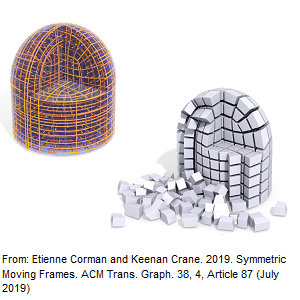
Imagine a ball bouncing going through the classic squish and rebound animation, or a superhero pulling apart a metal beam, a high-speed collision denting a metal sheet. Throughout time there's been different techniques to simulate these events but the most accurate and state of the art method utilizes volumetric meshes. Which is a fancy term for the ball, or beam, or sheet having a fully simulated interior. This leads to the question, how do we simulate the interior of an object? We could simulate every atom and treat the object as a cloud of particles, but it takes a lot of time to compute at this detail. Instead a more common practice is to divide the interior into small chunks, little pyramids or cube-like object. See the attached photo for an example. For reasons I won't get into here it turns out the small cube-like objects are the best. There has been a significant body of research on how to make these cube-like objects and recently, as in 2014, a new method has surfaced using the spaghetti type network shown on the left in my figure. This is called a Volumetric Frame Field, and by using them to fill the interior of our objects we can create highly accurate volumetric meshes. Muscle animations, finite element analysis, CT scans, Molecule analysis, accurate melting, and many more advanced computer graphics applications are all made possible by volumetric meshes and made better by the frame field.
This project is to write an in-depth overview, called a survey, of Volumetric Frame Fields. This includes their history, uses, advancements, and issues that need fixing. This hasn't been done for Frame Fields yet since they are a relatively new area of research. My goal is to create a document for future researchers, including myself, to use when first learning about Frame Fields to quickly be able to grasp what still needs to be done. This paper as well as more details on the project are live on the website linked below.

